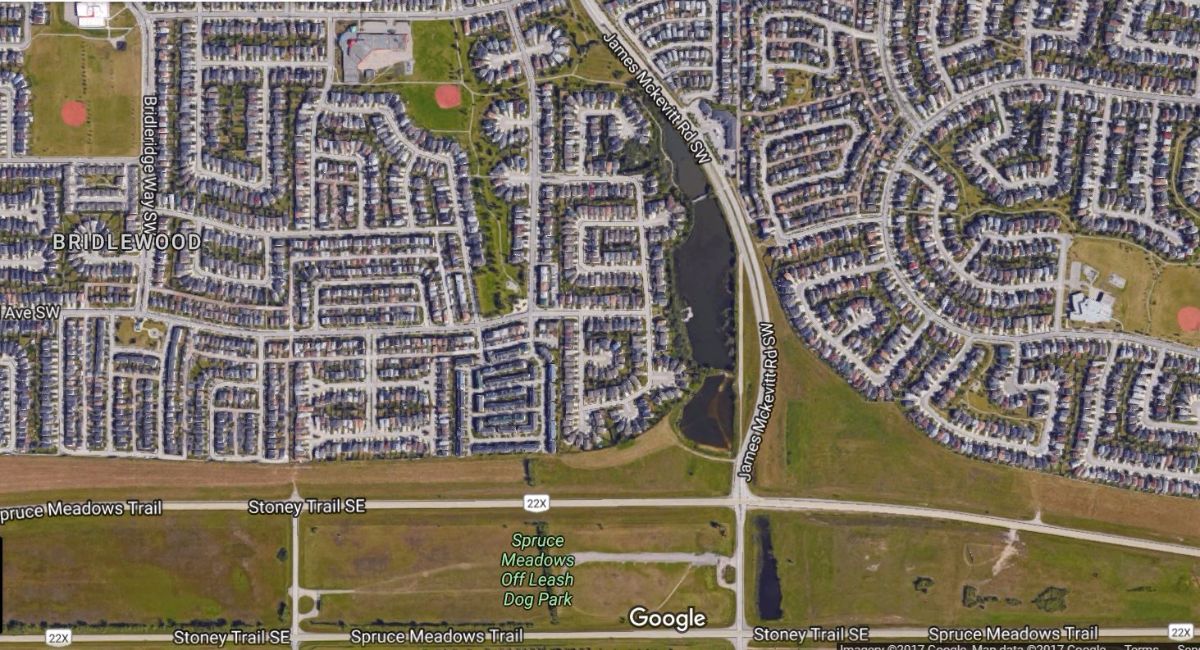Posted by Bob Lefebvre
Photographs of spring birds, by Tony LePrieur.

Yellow-rumped Warbler (Audubon’s), Bridlewood Wetland, April 30, 2017. Photo by Tony LePrieur.
Yellow-rumped Warblers are usually among the first warblers to pass through Calgary on Spring migration, along with Orange-crowned Warblers. Most of the ones we get here are the Myrtle subspecies, the eastern and northern form, which have a white throat and a more prominent black mask. They breed in the boreal forest. The Audubon subspecies, shown here, breeds in the western mountains. This year, quite a few Audubons were reported here. There is talk that the two subspecies will be split again into two separate species, so it is important to note which one you see, especially if you are recording your sightings on eBird.

Common Grackle, Bridlewood Wetland, April 30, 2017. Photo by Tony LePrieur.
The Bridlewood Wetland is located just north of Spruce Meadows, on James McKevitt Road in SW Calgary. It is a small wetland but has a trail around it and a bridge from which to view the birds.

The Bridlewood Wetland in SW Calgary.
The rest of the photos were taken in Carburn Park on the Bow River in SE Calgary.

Common Goldeneye (female), Carburn Park, April 30, 2017. Photo by Tony LePrieur.

Common Merganser (female), Carburn Park, April 30, 2017. Photo by Tony LePrieur.

Lesser Yellowlegs, Carburn Park, April 30, 2017. Photo by Tony LePrieur.
On spring migration, we get more Lesser Yellowlegs than Greater Yellowlegs in the city. But we do get both species. The Lesser is slighter, with a smaller head, and the bill is about the length of the head from front to back, as with this bird. The Greater Yellowleg’s bill is about one and a half times the head length, and often slightly curved upwards.

Song Sparrow, Carburn Park, April 30, 2017. Photo by Tony LePrieur.
This Song Sparrow is missing its tail. Birds don’t molt their tail feathers all at once, so a missing tail probably indicates that the bird narrowly survived an attack by a predator.

Beaver, Carburn Park, April 30, 2017. Photo by Tony LePrieur.
See more of Tony’s photos on his Flickr page.
Great photos and interesting information on the two Yellow-rumped warbler subspecies. Interesting comments above on the subspecies and their hybrids. Tony, I used your Yellow-rumped warbler as a model for a drawing and was thinking of posting the drawing on my blog (https://myrsbytes.com/). Would that be ok with you? I had a bit of a colour choice mishap so it is more of an Orange-rumped warbler.
Great photos Tony! You make me feel like I am back in Canada. Keep up the great work.
Hey Bob, thanks for posting this! Splitting Myrtle and Audubon’s comes as a bit of a surprise, considering the number of hybrids out here in the mountains. In fact, the warbler photographed has the white throat edging that I have come to expect on most of our seemingly Audubon’s warblers. Myrtle x Audubon’s hybrids are common and healthy, which, according to the Biological Species Concept, is a major factor for keeping these two together. I will watch the situation with interest.
Yes, we are getting lots of hybrids (or intergrades) of all types of Yellow-rumps here too. Warblers seem to be unusual in that several species hybridize and produce fertile offspring so there are all sorts of back-crosses (as if they weren’t already confusing enough). It seems that the last ice age created isolated populations in eastern and western North America for many species, but some weren’t separated for long enough to become completely reproductively isolated, but only superficially in colour pattern (Northern Flickers) or sometimes in colour and song, as with Yellow-rumps.